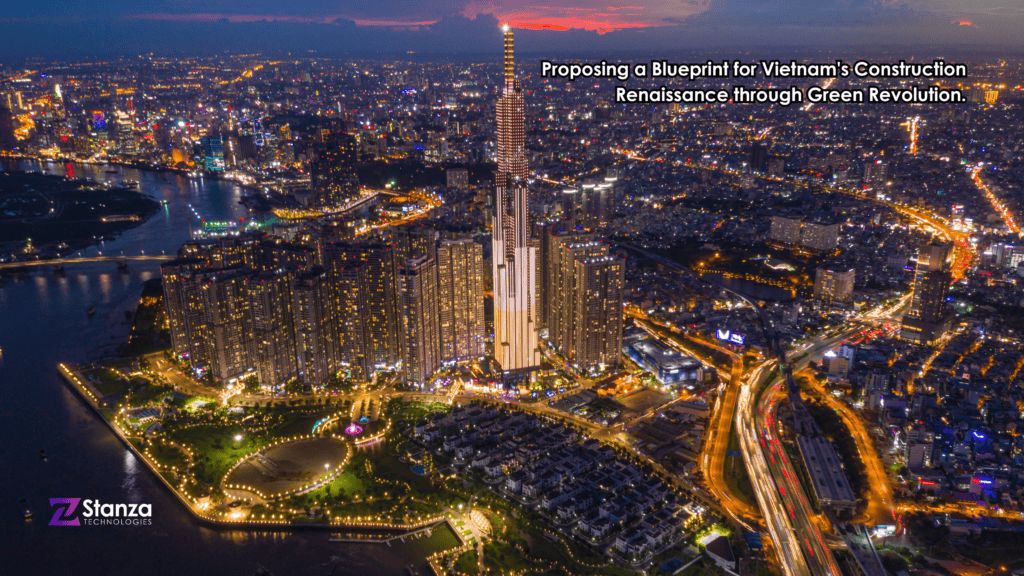Towards sustainable growth, Vietnam targets an incremental increase of 20 % by 2030 and 85 % by 2050, which is considered a remarkable step. The visionary move under the leadership of Tran Hong Thai, the Deputy Minister of the Ministry of Science and Technology, demonstrates that Vietnam envisions and commits to a green and environmentally friendly way of life.
By 2050, the share of renewable energy will rise dramatically from 26% to more than 60 %, with hydropower declining significantly and coal wholly eliminated. Power generation from gas will dominate that sector until 2030, after which hydrogen will take over by 2050. Solar and wind power will have a leading role in this, and it is projected to contribute 189GW of solar power and 30GW from wind by 2030, rising to an astonishing 170GW from just wind power by 2050.
While the energy targets are undeniably impressive, their transformative impact on the construction sector is equally noteworthy. The resolute decision to eliminate coal-derived power by 2050 sends a resounding signal of change, challenging construction companies to redefine their focus and redirect resources towards projects aligned with the burgeoning renewable energy sector.
The plan’s spotlight on gas-derived power until 2030, followed by a shift to hydrogen, highlights the urgent need for new infrastructure. Construction companies are poised to seize this opportunity by specializing in developing facilities supporting these evolving energy sources, such as constructing gas facilities and laying the groundwork for hydrogen production. This positions the construction sector as pivotal in facilitating Vietnam’s energy transition fostering innovation and sustainability.
The surge in solar and wind power outlined in the plan implies a surge in construction projects, creating new horizons for the industry. Solar farms projected to produce 189 GW and wind farms contributing 30 GW by 2030, escalating to an impressive 170 GW by 2050, will necessitate extensive infrastructure development.
There are many initiatives construction companies can strategically implement in promoting the use of Vietnam’s Green Revolution. Here are some Key Augmentations to lead the industry’s transformation towards green building practices.
Key Augmentations towards Green Revolution:
1. Strategic Collaboration and Partnerships:
The construction sector can harness the power of collaboration and partnerships, forming alliances with renewable energy firms and research institutions. By pooling resources and expertise, construction companies can accelerate the development of cutting-edge sustainable infrastructure.
2. Investment in Renewable Energy Training:
To fully capitalize on the green revolution, construction companies can invest in training programs for their workforce. Equipping employees with the skills and knowledge necessary for renewable energy projects positions the industry for long-term success.
3. Government Advocacy and Policy Engagement:
Construction firms can actively engage with governmental bodies to shape policies that promote sustainable construction practices. The industry can further bolster its contribution to the green agenda by advocating for supportive regulations and incentives.
4. Integration of Smart Technologies:
Embracing innovative technologies in construction processes can enhance efficiency and sustainability. Integrating these technologies from energy-efficient building materials to smart grids aligns with the eco-friendly ethos of the renewable energy era.
5. Community Engagement and Environmental Stewardship:
Construction companies can champion community engagement initiatives and environmental stewardship programs. By involving local communities and demonstrating a commitment to environmental responsibility, firms can foster positive public perception and build a legacy of sustainable development.
Vietnam’s green revolution is not just a change in energy sources but a catalyst for a construction renaissance. By embracing diversification, specialization, job creation, leadership in eco-friendly practices, and innovation in sustainable building, the construction sector can play a central role in shaping Vietnam’s cleaner, greener, and more prosperous future.










